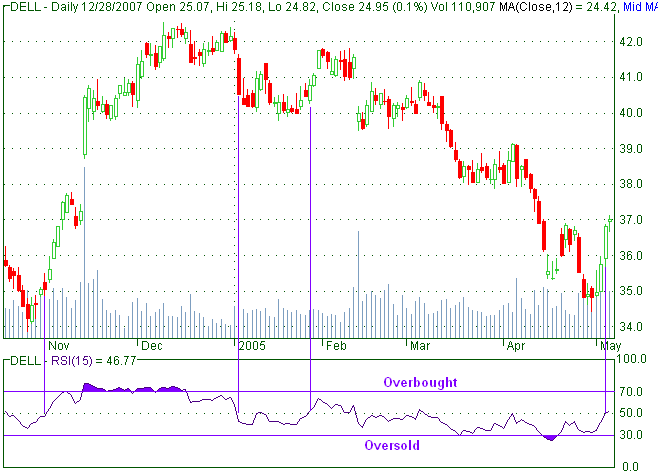|
|
Relative
strength index RSI = 100 - 100 / (1 + RS)
RS = Average Gain / Average Loss
How To Use
Overbought/Oversold Go long when RSI falls below the 30 level and rises back above it
Go short when RSI rises above the 70 level and
falls back below it Buy and sell signals can also be generated by looking for positive and negative divergences between the RSI and the underlying stock. For example, consider a falling stock whose RSI rises from a low point back up to a high point. Because of how the RSI is calculated, the underlying stock will often reverse its direction soon after such a divergence. As in that example, divergences that occur after an overbought or oversold reading usually provide more reliable signals.
Go long on a positive divergence where the
first trough is below 30. The centerline for RSI is 50. Readings above and below can give the indicator a bullish or bearish tilt. On the whole, a reading above 50 indicates that average gains are higher than average losses and a reading below 50 indicates that losses are winning the battle. Some traders look for a move above 50 to confirm bullish signals or a move below 50 to confirm bearish signals.
|
|
|

